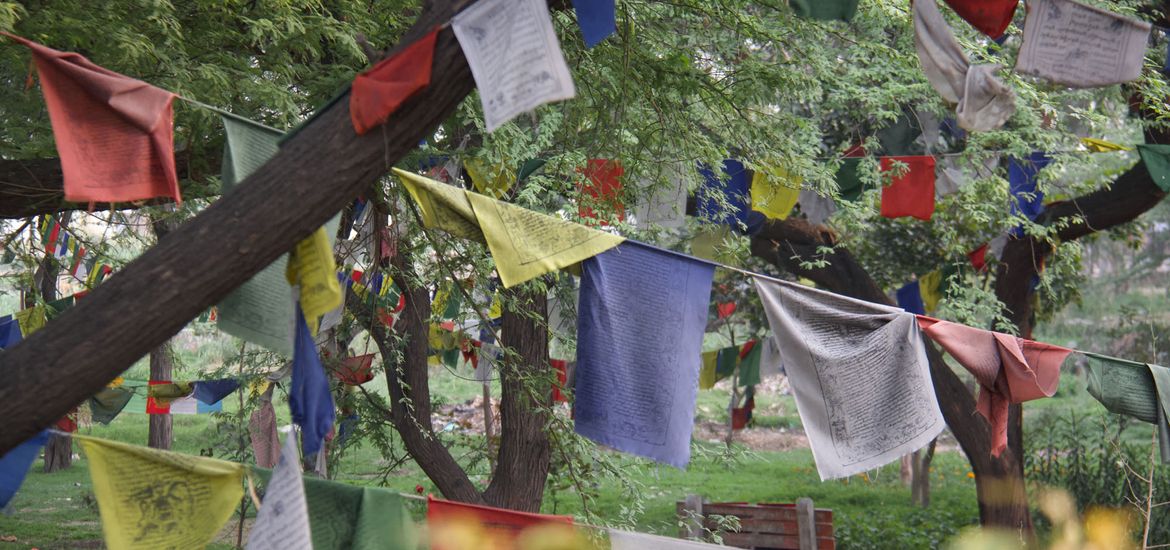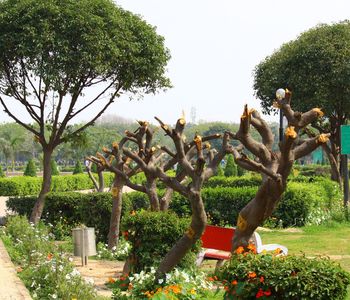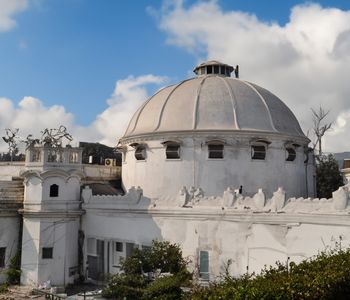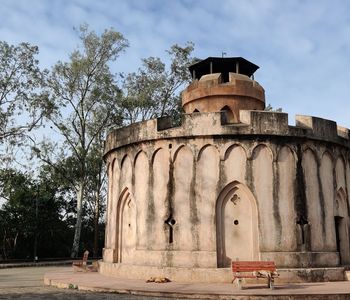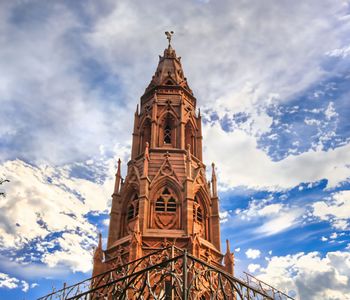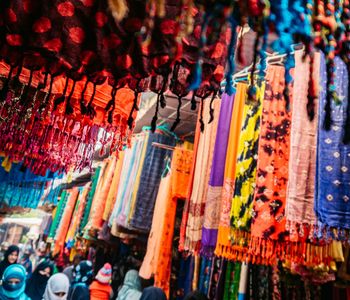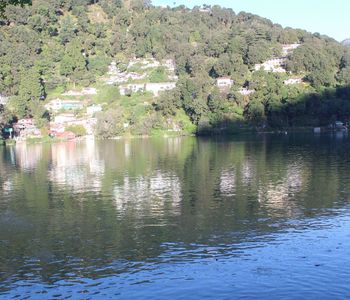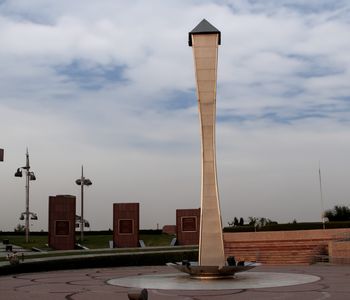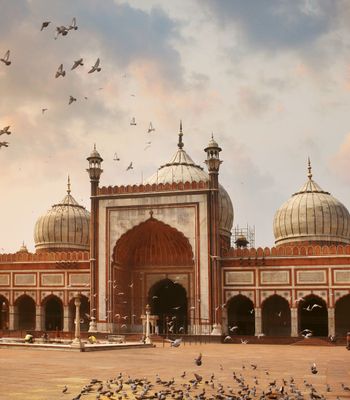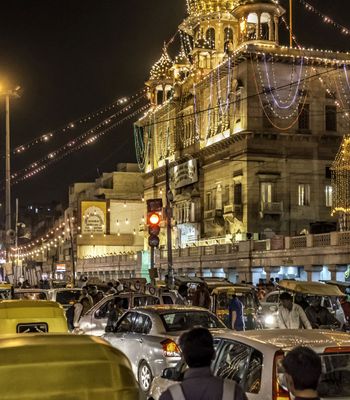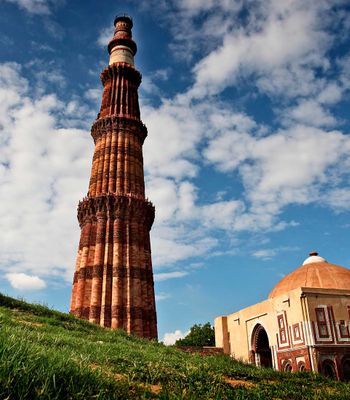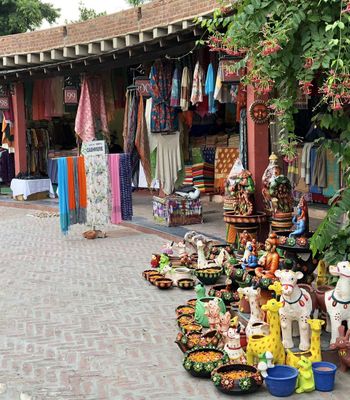You know those rare places that somehow manage to slow down time the moment you step in? Majnu Ka Tilla is one of them. It’s not just a spot on Delhi’s map; it’s a living, breathing memory wrapped in prayer flags, dumpling steam, and stories passed down like lullabies.
One minute, you're dodging autos and Delhi heat; the next, you’re wandering quiet lanes lined with Tibetan cafés, monks in maroon robes, and shopkeepers who smile like they already know you're going to fall in love with this place. It’s chaotic and calm, old and new, loud and soulful, all at once.
Majnu Ka Tilla: Where History, Faith & Exile Come Together
Tucked beside the Yamuna River, Majnu Ka Tilla carries a name as poetic as its past. It all began in the 15th century, when an Iranian Sufi mystic named Abdulla, lovingly called Majnu (meaning "lost in love"), would ferry people across the river for free, believing it to be his service to God.
On 20th July 1505, his path crossed with Guru Nanak Dev Ji, the founder of Sikhism. The Guru was so moved by Majnu’s devotion that he stayed with him till the end of the month.
Centuries later, in 1783, Sikh leader Baghel Singh Dhaliwal built a Gurudwara at this very spot to honour Guru Nanak’s visit. Even the sixth Sikh Guru, Guru Hargobind Ji, spent time here.
The land was later gifted by Maharaja Ranjit Singh, and the shrine still stands today, quietly powerful and deeply sacred.
A Peek into Majnu Ka Tilla’s Temple Architecture
Step into Majnu Ka Tilla, and you’ll instantly feel the calm cultural richness of a typical Tibetan monastery. The temple and adjoining monastery are designed with unmistakable influences from traditional Chinese and Tibetan architectural styles, from their bold colours to the thoughtful structural layout.
The entire complex is planned with intent. Just like ancient sacred spaces, the temple and monastery sit side by side, their styles gracefully merging. The bright hues, reds, golds, and deep blues, are directly drawn from Thangka paintings, which depict the life and teachings of Lord Buddha.
Every detail here feels intentional. The floral-painted columns, the intricate toranas (gateways), and the wooden doorframes all reflect Buddhist design traditions. Even the use of wood, a nod to Indian Buddhist architecture, serves a purpose: sound absorption, especially under vaulted roofs.
Hidden Gems of Majnu Ka Tilla You Probably Didn’t Know About
Majnu Ka Tilla is more than momo joints and monastery walks. Here are a few offbeat spots you’ll be glad you didn’t miss:
- Ama Café’s Secret Reading Nook: Tucked in a corner upstairs, this cosy café space is perfect for solo travellers, journaling, or getting lost in a book with a cup of butter tea.
- The Hidden Alleyway Murals: Wander through the side lanes behind the main market, and you’ll spot beautiful hand-painted Tibetan murals that rarely make it to Instagram.
- Vintage Shops with Rare Finds: Look beyond the tourist stalls, and you’ll stumble upon locally owned stores with antique Buddhist relics, old coins, and quirky jewellery. Bargain gently!
- Moonlight Café’s Rooftop View: Not always packed, but those in the know head here for sunset chai with rooftop views of the Yamuna and the fluttering prayer flags.
- The Mini Library Inside the Monastery: If you’re lucky enough to ask the right monk or volunteer, you might be shown a small reading room that houses Tibetan texts, some translated into English.
- Chokhang Buddhist Temple’s Quiet Courtyard: While the prayer hall draws the crowd, the peaceful courtyard often goes unnoticed, a lovely spot to sit and soak in silence.
When to Visit Majnu Ka Tilla?
If you want to truly enjoy the charm of Majnu Ka Tilla, plan your trip between October and March. The weather during these months is comfortably cool, think pleasant 5°C to 25°C, perfect for walking around, shopping, or soaking in the spiritual vibes of the monastery.
For a deeper cultural experience, time your visit around major Tibetan festivals. Losar (Tibetan New Year), celebrated in February or March, brings the entire area to life with traditional dances, prayers, and colourful decorations. Another beautiful time to visit is July when the community comes together to celebrate the Dalai Lama’s birthday.
How to Reach Majnu Ka Tilla: A Travel Guide to Delhi’s Little Tibet
If you're planning to visit Majnu Ka Tilla, getting there is quite straightforward, whether you’re a local or flying in from afar.
By Air
Landing at Indira Gandhi International Airport (DEL)?
- By taxi/ride apps: Around 45–60 minutes, depending on traffic.
- By Airport Metro Express and Yellow Line: Take the Airport Express to New Delhi station, then switch to the Yellow Line toward Samaypur Badli. Get off at Vidhan Sabha.
By Train
From New Delhi Railway Station (NDLS): Take the metro from New Delhi (Yellow Line) and get off at Vidhan Sabha.
From Old Delhi Railway Station (DLI): Just 10–15 minutes away by auto-rickshaw or cab.
By Road
Majnu Ka Tilla is right next to the Kashmiri Gate ISBT, one of Delhi’s biggest bus terminals. You can catch a local DTC bus or intercity service from here and walk or take a rickshaw to the Tibetan colony. Ask to get down near Majnu Ka Tilla Gurudwara.
Your next best bet is to take the Delhi Metro. Hop on the Yellow Line and get off at Vidhan Sabha Metro Station. From there:
- Auto-rickshaw or cycle-rickshaw: ₹30–₹50, and you'll be there in 10 minutes.
- On foot: It’s about a 20-minute walk if you're up for a stroll.
Pro tip: The metro is super convenient, clean, and avoids the city traffic, perfect for first-time visitors.
Majnu Ka Tilla isn’t just a place you visit; it’s one you feel. You’ll leave with stories, flavours, and a strange calm that stays long after you’ve gone. It’s not just a stop in Delhi; it’s a whole world tucked quietly beside the Yamuna.
